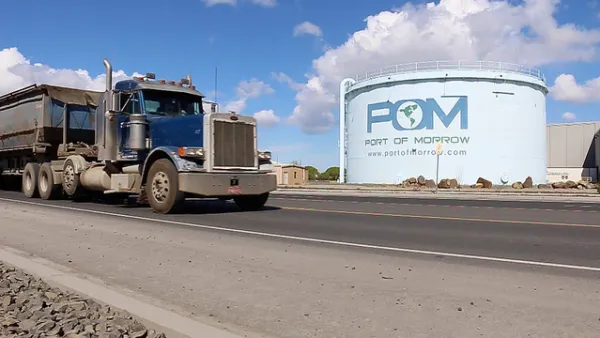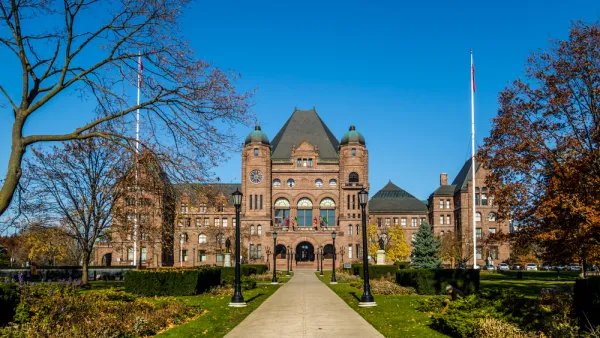Ontario Premier Kathleen Wynne made a strong case for taking decisive climate change action when she signed an historic agreement to join the Quebec program that trades carbon with California.
Much like in the United States, bold climate action is undertaken primarily by provinces as opposed to the federal government which has yet to forge a national strategy.
"Ontario Premier Kathleen Wynne on Monday signed a historic deal [onApril 13] to join Quebec’s cap-and-trade system for carbon emissions," write Jane Taber and Adrian Morrow in The Globe and Mail. "Many of the details in Ontario’s cap-and-trade system still have to be worked out over the next six months, but it is likely to look similar to the joint system run by Quebec and California."
"Climate change is one of the greatest challenges humankind has ever faced. This is about preserving a world for our children and our grandchildren,” Ms. Wynne told reporters after meeting [Quebec Premier Philippe] Couillard in his office near the National Assembly.
Wynne emphatically makes her point in the accompanying video at a press conference.
In a separate piece, Morrow explains how cap-and-trade works and how it differs from a carbon tax:
It’s a system where the government caps the total amount of carbon emissions allowed. The government then issues permits to companies, specifying exactly how much carbon that company can burn. If a company wants to burn more than its share of carbon, it must buy extra permits from other companies that have burned less.
Recently we noted that businesses in Vermont were pushing the state to enact the nation's first carbon tax, but it's increasingly looking as if cap-and-trade may be the preferred carbon pricing system, and that Canada is where progress is being made.
Once Ontario’s system is operating, 62 per cent of Canada’s population and more than half its economy will be under the same carbon market. Including [British Columbia] B.C., which uses a carbon tax instead, some three quarters of Canadians will be covered by provincial-level carbon pricing.
While the federal government is moving forward with some climate-change measures – such as new regulations to make trucks more fuel efficient, and a plan to phase out coal-fired power generation – Ottawa has adamantly refused to support carbon pricing.
“We are very clear we don’t want … what is effectively a tax on carbon which would increase the cost for consumers and on taxpayers – the cost of electricity, of gasoline, of groceries,” Finance Minister Joe Oliver [see Canadian Ministry] told reporters Monday in response to Ontario and Quebec’s deal.
“This is a bold move from the province of Ontario — and the challenge we face demands further action from other states and provinces around the world,” [Gov. Jerry] Brown said. “There’s a human cost to the billions of tons of carbon spewing into our atmosphere, and there must be a price on it."
FULL STORY: Ontario unveils cap-and-trade plans as provinces take lead on climate change

National Parks Layoffs Will Cause Communities to Lose Billions
Thousands of essential park workers were laid off this week, just before the busy spring break season.

Retro-silient?: America’s First “Eco-burb,” The Woodlands Turns 50
A master-planned community north of Houston offers lessons on green infrastructure and resilient design, but falls short of its founder’s lofty affordability and walkability goals.

Delivering for America Plan Will Downgrade Mail Service in at Least 49.5 Percent of Zip Codes
Republican and Democrat lawmakers criticize the plan for its disproportionate negative impact on rural communities.

Test News Post 1
This is a summary

Test News Headline 46
Test for the image on the front page.

Balancing Bombs and Butterflies: How the National Guard Protects a Rare Species
The National Guard at Fort Indiantown Gap uses GIS technology and land management strategies to balance military training with conservation efforts, ensuring the survival of the rare eastern regal fritillary butterfly.
Urban Design for Planners 1: Software Tools
This six-course series explores essential urban design concepts using open source software and equips planners with the tools they need to participate fully in the urban design process.
Planning for Universal Design
Learn the tools for implementing Universal Design in planning regulations.
EMC Planning Group, Inc.
Planetizen
Planetizen
Mpact (formerly Rail~Volution)
Great Falls Development Authority, Inc.
HUDs Office of Policy Development and Research
NYU Wagner Graduate School of Public Service




























